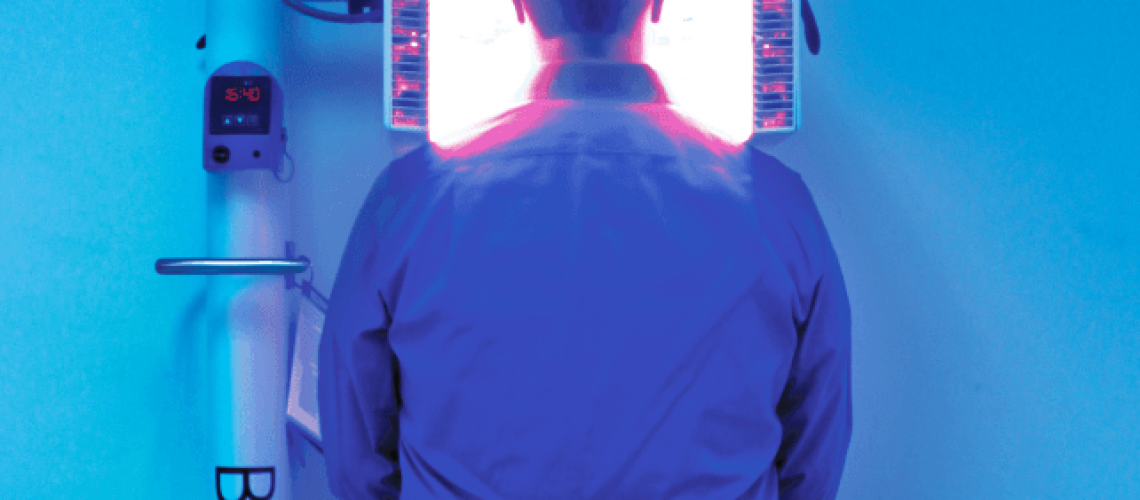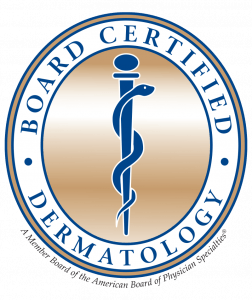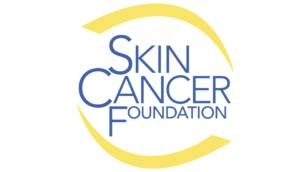Photodynamic Therapy (PDT) for actinic keratosis
What are actinic keratosis?
Actinic keratosis are rough scaly patches on the skin caused by chronic sun exposure. They are more common in fair skin/blue-eyed people and are precancerous. If left untreated, actinic keratosis may progress to squamous cell skin cancer. Therefore, early treatment of actinic keratosis will reduce the risk of developing skin cancer.
What treatments exist for actinic keratosis?
Fluorouracil, Imiquimod (AK gel), Diclofenac, Liquid nitrogen, and PDT.
What is Photodynamic Therapy (PDT)?
PDT is an FDA approved treatment for actinic keratosis. It works through the topical application of a photo sensitizing chemical (Levulan) which is then stimulated by a blue wavelength of light. The chemical reaction subsequently destroys actinic keratosis (i.e., precancerous lesions).
What are the advantages of PDT?
PDT is applied to the entire field of sun damage, thereby destroying actinic
keratosis that are both visible and microscopic. The exact areas to be treated are applied by the physician to ensure the accuracy of the treatment. Scientific studies have shown that people who have undergone PDT have improved skin texture and tone, as well as an improvement in their overall appearance. In addition, the reaction that develops from PDT often subsides within two weeks whereas the reaction from Fluorouracil or Imiquimod may last longer than four to six weeks. Finally, most Medicare plans cover the cost of PDT through a medical benefit.
What can I expect on the day of the PDT procedure?
- We will lead you to our procedure room and informed consent will be obtained.
- We will cleanse your face with alcohol/acetone
- Rough areas are gently abraded with extremely fine sandpaper to enhance penetration of the gel. This process is well-tolerated with minimal discomfort. On occasion, thick precancerous areas require local anesthesia and scraping.
- Ameluz gel (a photosensitizing chemical) will be applied to the treatment area.
- Protective eyewear is placed on the patient and then a U-shaped blue light is placed over the patient to activate the Ameluz gel. The bluelight shines for 30 minutes and then the procedure is over.
- We will clean your face and then apply sunscreen. You will be very sensitive in the sunlight for the next 48 hours. Make sure to wear a hat while outside.
- Expect redness and some scabbing to develop which generally resolves within 2 weeks. Use a gentle skin cleanser and moisturizer with sunscreen. Vaseline may be applied to any scabs.
The entire procedure is virtually painless!
In the past, patients would leave the office for 1 to 2 hours while the Ameluz soaked into the skin (incubation), and then return for application of blue light. Most times, patients experienced a severe painful burning sensation while sitting under the blue light. (And they swore they would never do this treatment again).
However, we are now performing ‘painless PDT’ in which there is no incubation, and therefore there is no burning sensation while under the light. We are however seeing equivalent results to previous protocol.
To see full benefit and maximal results, you will need 2 treatments, 1 month apart. We then request that you return 1 month after the second treatment for reevaluation.
If you are pregnant, have a disease called porphyria, or a blood clotting disorder, please notify us prior to the PDT treatment.









